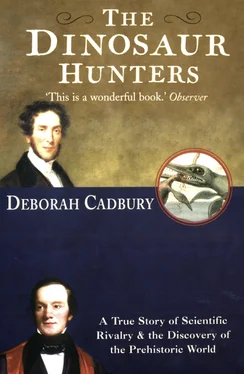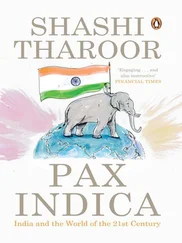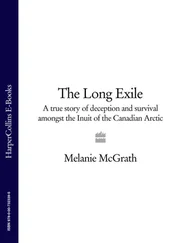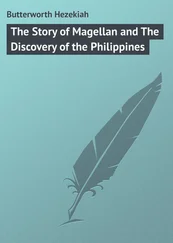Unlike the conical ridged teeth of the crocodile, these teeth were compressed, with a long serrated edge along the whole extent of the enamel, like a steak knife. The exterior surface of the jaw had distinct cavities for the passage of blood vessels and nerves, allowing the creature a very good blood supply to support the activity of the jaw. And whereas a crocodile jaw is long, thin and pointed, this fragment of lower jaw was short, high and narrow, flattened from side to side. From the absence of curvature on any piece of the lower jawbone, nearly a foot in length, it seemed likely that this creature’s jaw terminated in a flat, straight, and very narrow snout. Cuvier concluded that of all living animals, these bones were most similar to a carnivorous lizard known as the monitor lizard. However, there was one crucial difference: size. Comparing the thigh bone, which was ten inches in circumference, to the equivalent bone in a lizard, he simply scaled up. ‘From these dimensions,’ wrote Buckland, ‘a length exceeding 40 feet and a bulk equal to that of an elephant seven feet high, have been assigned by Cuvier to the individual to which this bone belonged … we may with certainty ascribe to it a magnitude very far exceeding that of any living lizard.’
Although the archives suggest that Buckland had accumulated all this information from his meeting in 1818 with Georges Cuvier and subsequent correspondence, he was in no hurry to publish the findings. His reluctance to announce the find may simply have reflected a reasonable scientific caution. Unlike the ichthyosaurs that Mary Anning had found at Lyme, the Stonesfield animal was far from complete. But Buckland was also well aware that the Anglican authorities who had helped him obtain his stipend as professor from the Treasury were hoping that he would reconcile any geological discoveries with the Bible. A forty-foot reptile was hardly the ideal candidate. After all, there was no record of such a fantastic, almost mythical creature in Moses’ account of Creation.
Rather than devoting his time to combing the quarries for further evidence of his huge reptile, Buckland set his sights on another quest altogether: to discover proof of the biblical Flood. In 1819 he presented his inaugural address in geology at Oxford, ‘Vindiciae Geologicae, or The Connexion between Geology and Religion explained’. With great deference to the classical tradition, he explained why ‘no evil should be anticipated’ if geology was permitted to serve as ‘the handmaid of Religion’. He reassured the bishops and deans in the audience that there would be no opposition between the ‘Works’ and the ‘Word’ of God. There was no mention of the giant beast of Stonesfield; instead, Buckland expressed his conviction that the new science was bound to provide evidence of the recent origin of Man and the Great Flood.
By 1819, Buckland thought he had convincing evidence for the Deluge. Accompanied by his friend the geological enthusiast Count Breunner of Vienna, he studied the distribution of quartz pebbles and gravels across England. They traced these gravels ‘over the plains of Warwickshire, the Midlands, on some hills in Oxfordshire and in the valley of the Thames … to below London’. Later that autumn, Buckland wrote a paper for the Geological Society on ‘the evidences of the Recent Deluge’, in which he proposed that the fearsome torrents of ‘the first rush of the advancing deluge’ had swept these gravels across southern England. They had, he thought, retraced the actual path of the Flood.
The nearest source to which the Reverend Buckland and the Count could trace the pebbles was Lickey Hill in Worcestershire: ‘they present the same glassy brilliancy of fracture … the same small crystals of decomposing felspar throughout’. Consequently they believed the pebbles had originated from Worcestershire and had been ‘torn up by the waters of the last Deluge’. As the Flood subsided, ‘the weight and force of the immense volume of water … excavated the series of sweeping combs and valleys’, seen for example from Bath to Stow-on-the-Wold. Although Buckland could find no geological evidence to explain what prompted the Deluge and could not define the dimensions of the tidal wave, he was in no doubt that a giant surge or tidal wave had once occurred.
In pursuing evidence for a Flood, Buckland was hoping to resolve philosophical issues that lay at the heart of geology. This would not only add credibility to the new science but could also shed light on what happened to the ‘former worlds’ uncovered by geologists. There was, as yet, no framework within which creatures such as the Ichthyosaurus or the strange reptile from Stonesfield could be understood. Where did these beasts come from and, above all, what had happened to them? Why had God erased these creatures from the face of the earth? In England, where the Anglican faith dominated academic centres like Oxford, the best clue to extinction was the biblical Flood. But in France, naturalists were beginning to put forward new ideas.
Since the discovery that mammalian species such as the mammoth and the mastodon had disappeared from the earth’s surface, the puzzle of extinction had been keenly debated in Paris at the Muséum National d’Histoire Naturelle. Georges Cuvier and a senior colleague at the museum, the ‘Professor of Insects and Worms’ Jean-Baptiste Lamarck, had developed radically opposing theories. According to Lamarck, species were not necessarily extinct at all. They had developed by ‘transmutation’ into other forms of life.
Lamarck’s thinking stemmed from eighteenth-century beliefs that all living things were linked by imperceptible transitions; Nature was a continuous ‘Chain of Being’. The simplest organisms on the scale were those that maintained the minimum conditions for life, and Man, the supreme form, was at the top of the hierarchy. The great Chain of Being was an attempt to explain the incredible diversity of living forms in the absence of any chronology showing the order in which animals appeared on the earth. Lamarck believed that as organisms in this ‘scale of being’ strove for perfection they could transform themselves while adapting to their environment. Changing circumstances led to new responses from animals, which eventually became habitual. Organs could change permanently by frequent use or habits, allowing for the progression of animal forms into ever more complex types, without any special creation from God. This is what he meant by the ‘transmutation’ of species. In his Philosophie Zoologique published in 1809 he outlined a thesis in which humble creatures could ‘generate’ into higher forms of life.
Lamarck had little evidence to back up his ideas; the fossil record at the beginning of the nineteenth century was so incomplete that there was no proof of the progression of life over time. From his studies on fossil invertebrates, he could only show that the fossil molluscs such as ammonites and belemnites found in ancient Secondary rock were very different from living species. Neither did he propose a convincing mechanism to demonstrate how evolution might have occurred. Nonetheless, in his lectures he described the invertebrates as the most primitive forms of life and, he speculated, ‘perhaps the ones with which Nature began, while it formed all the others with the help of much time and of favourable circumstances’. His ideas on development implied that no species became extinct – they were merely transformed: ‘one may not assume,’ he wrote in 1802, ‘that any species has really been lost or rendered extinct’.
Jean-Baptiste Lamarck’s revolutionary thinking had worrying implications. Could intelligence and rational thought, the ‘God-given’ attributes which set Man apart from animals, have developed from more primitive forms of life? If organisms transformed themselves and higher forms could emerge from lower forms, then Man was not specially made by God. Buckland’s friend Conybeare was one of many to denounce Lamarck’s ‘ridiculous’ theory. It was ‘an idea so monstrous’, Conybeare told the Geological Society in 1821, ‘that nothing less than the credulity of a material philosophy could have been brought for a single moment to entertain it, nothing less than its bigotry to defend it’. The idea that Nature was autonomous and could randomly generate higher forms of existence, including Man, was greeted with intense hostility and roundly condemned.
Читать дальше












